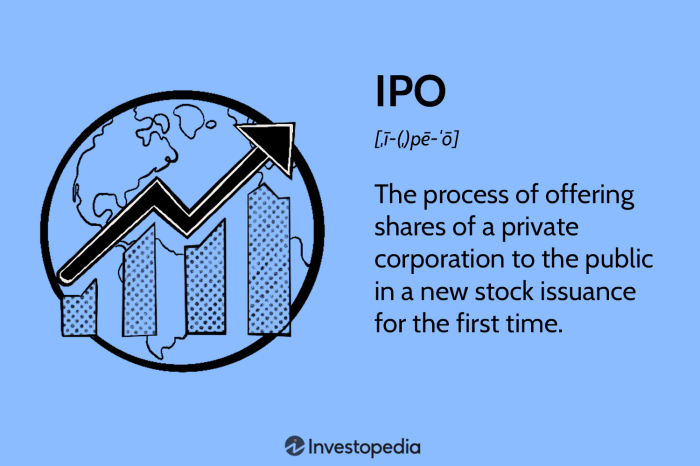Birkenstock’s IPO: A Deep Dive into its Market Performance
Birkenstock stock ipo price – Birkenstock’s highly anticipated initial public offering (IPO) marked a significant event in the footwear industry. This analysis delves into the various aspects of Birkenstock’s IPO, from its historical context and pricing factors to its post-IPO performance and future prospects. We will examine key financial metrics, competitive landscape, and the influence of macroeconomic factors on its stock price.
Birkenstock’s IPO History
Birkenstock’s IPO took place on [Insert Date], listing on the [Insert Exchange]. The initial offering price was set at [Insert Price]. Comparing this to other footwear brand IPOs requires considering factors like company size, brand recognition, and market conditions at the time of each offering. While a direct comparison is complex due to varying market dynamics, a general observation might be made regarding the relative success of the IPO compared to, for instance, a hypothetical IPO by a smaller, less established brand.
Further analysis would need to account for post-IPO performance to draw meaningful conclusions.
| Metric | Value | Metric | Value |
|---|---|---|---|
| Initial Offering Price | [Insert Value] | Number of Shares Offered | [Insert Value] |
| Total Proceeds from IPO | [Insert Value] | Market Capitalization at IPO | [Insert Value] |
Factors Influencing Birkenstock’s IPO Price

Source: investopedia.com
Several factors contributed to Birkenstock’s IPO pricing. Strong investor sentiment, fueled by the brand’s established reputation and market demand for comfortable and durable footwear, played a crucial role. The company’s strong brand recognition and unique market positioning as a provider of high-quality, comfortable sandals and shoes also influenced its valuation. Favorable market conditions at the time of the IPO, including overall investor confidence and robust market activity in the consumer discretionary sector, also likely contributed to a higher valuation.
Post-IPO Stock Performance of Birkenstock, Birkenstock stock ipo price
Since its IPO, Birkenstock’s stock price has [Insert Description of Performance – e.g., experienced moderate growth, shown significant volatility, etc.]. This performance can be compared to initial projections and analyst forecasts to assess the accuracy of pre-IPO valuations and market expectations.
| Date | Stock Price | Date | Stock Price |
|---|---|---|---|
| [Insert Date] | [Insert Price] | [Insert Date] | [Insert Price] |
| [Insert Date] | [Insert Price] | [Insert Date] | [Insert Price] |
Birkenstock’s Financial Performance and Valuation

Source: thekit.ca
Birkenstock’s financial performance is characterized by [Insert Description of Performance – e.g., consistent revenue growth, strong profit margins, manageable debt levels, etc.]. Its market capitalization is determined through standard valuation methods, considering factors like revenue, profitability, and growth prospects. These metrics provide a comprehensive view of the company’s financial health and overall value.
| Year | Revenue | Profit Margin | Debt Level |
|---|---|---|---|
| [Insert Year] | [Insert Value] | [Insert Value] | [Insert Value] |
| [Insert Year] | [Insert Value] | [Insert Value] | [Insert Value] |
Competitive Landscape and Market Analysis for Birkenstock
Birkenstock operates in a competitive footwear market. Its key competitive advantages include its strong brand recognition, focus on comfort and quality, and unique product design. However, the company faces challenges from established players and emerging brands. Understanding the competitive landscape is crucial for assessing Birkenstock’s long-term prospects.
Birkenstock’s IPO price generated significant buzz, prompting comparisons to other similarly positioned companies. Investors are naturally interested in how its performance stacks up against others in the healthcare sector, such as the fluctuating arcturus therapeutics stock price , which offers a contrasting case study in market volatility. Ultimately, however, the Birkenstock stock IPO price will be judged on its own merits and long-term trajectory.
- Competitor A: [Market Share Percentage]
- Competitor B: [Market Share Percentage]
- Competitor C: [Market Share Percentage]
Birkenstock’s Long-Term Growth Prospects
Birkenstock’s long-term growth strategies focus on [Insert Strategies – e.g., expanding product lines, entering new markets, enhancing brand image, etc.]. However, risks such as changing consumer preferences, economic downturns, and increased competition could impact its future performance. The company’s strong brand image and loyal customer base provide a solid foundation for long-term success.
Impact of Macroeconomic Factors on Birkenstock’s Stock Price
Macroeconomic factors, such as inflation and interest rates, significantly influence Birkenstock’s stock price. Geopolitical events and global economic trends also play a role. Understanding these influences is essential for predicting future stock performance.
- Scenario 1: [Macroeconomic Condition]
-Likely Impact: [Description of Impact on Birkenstock] - Scenario 2: [Macroeconomic Condition]
-Likely Impact: [Description of Impact on Birkenstock]
Popular Questions: Birkenstock Stock Ipo Price
What were the key risks identified in Birkenstock’s IPO prospectus?
The prospectus likely highlighted risks related to competition, macroeconomic factors (e.g., inflation, recession), changes in consumer preferences, and supply chain disruptions.
How did Birkenstock’s brand loyalty impact its IPO valuation?
Strong brand loyalty contributed positively to the valuation, signifying consistent demand and reduced marketing costs, making it a less risky investment for many.
What are Birkenstock’s main competitive advantages?
Birkenstock’s competitive advantages likely include its established brand recognition, unique product design, focus on comfort and quality, and a loyal customer base.
What are some potential future challenges for Birkenstock?
Potential challenges include increasing competition, maintaining brand image, managing supply chain complexities, and adapting to shifting consumer trends and economic fluctuations.



